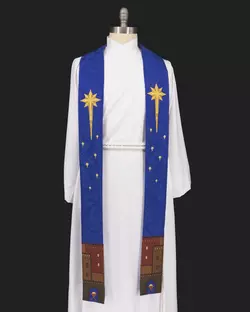
For Pastor Appreciation Month, we’re offering 10% off all stoles for the first time ever with code PASTOR10. This limited-time sale runs until the end of October, so don’t miss your chance to grab a handcrafted stole at a discounted price.
Like this:
Like Loading...

Welcome! For those new to crafting church vestments, our beginner-friendly Carlisle fabric is perfect. It’s durable, wrinkle-resistant, and easy to handle, making it ideal for albs, surplices, chasubles, and more. Carlisle is versatile, affordable, and comes in various colors like White, Ivory, and shades of Green and Purple. Visit Carlisle Fabric to learn more and order swatch samples.
Like this:
Like Loading...
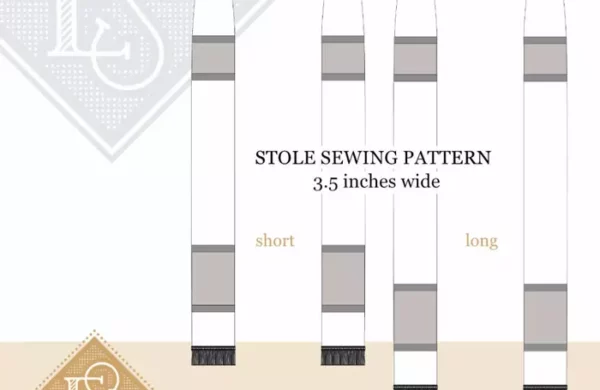
Discover easy-to-use sewing patterns for pastor and priest stoles at Ecclesiastical Sewing. From classic designs like the 3 1/2-inch stole to versatile options like the Transitional Deacon to Priest stole, our patterns come with clear instructions. Create unique and meaningful church vestments with our user-friendly designs.
Like this:
Like Loading...
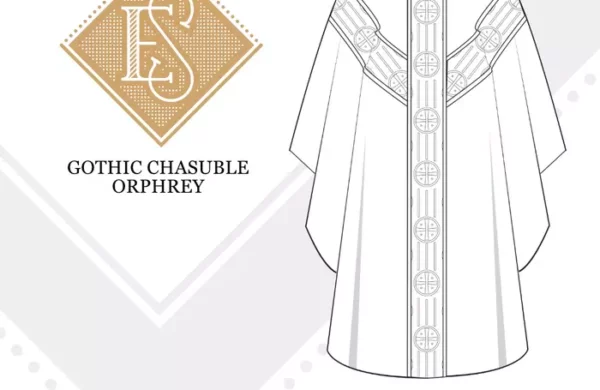
Chasubles are typically made of a lightweight, flowing fabric that features a large orphrey (decorative band) around the neck and down the front. There are a variety of fabric options that may be used for making chasubles, each with its own unique characteristics and benefits. Let’s take a few moments to explore some of the fabrics that might be used to create our Gothic Chasuble Sewing Pattern.
Like this:
Like Loading...
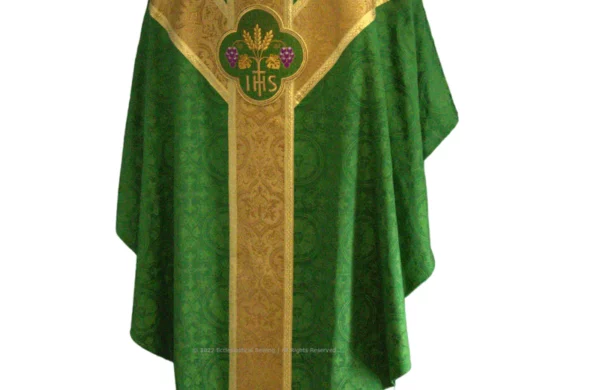
The chasuble was an ordinary garment, and very full in form. The idea was that the cloth would cover the wearer’s clothes, providing extra warmth and protection from the elements. Romans called this piece of clothing a “clasura,” or “little house.” This garment evolved into a liturgical vestment that became specific to priests and used only during celebrations of the Mass.
Like this:
Like Loading...
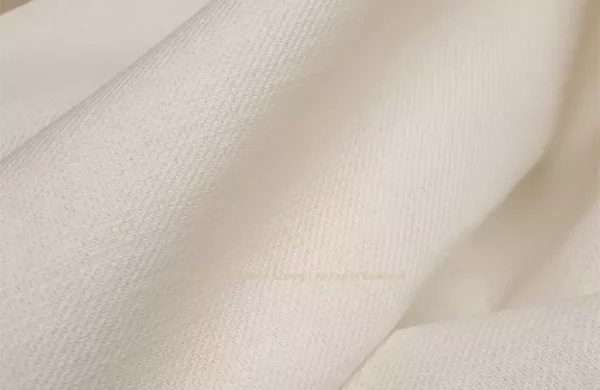
For great-looking vestments, use quality interfacing inside. Choose materials like Dowlas linen, French Micro Twill, and Silk Organza for stoles. Use pre-shrunk white cotton canvas for medium-weight support. For altar frontals, pick Dowlas or various weights of cotton canvas. Opt for Silk Dupioni, Satin Lining, or Cotton Sateen for lining, with dress-weight satin being versatile, Silk Dupioni serving dual purposes, and Cotton Sateen minimizing slipping in stoles.
Like this:
Like Loading...
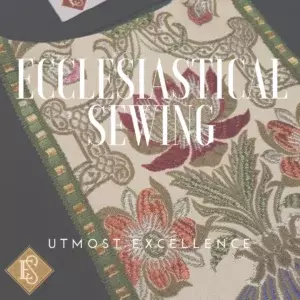
A DIY stole can be a truly special gift. We hope to help you make a stole that will serve your pastor, priest, or deacon for many years to come. Here at Ecclesiastical Sewing we have the top 10 materials for your DIY stole-making projects!
Like this:
Like Loading...
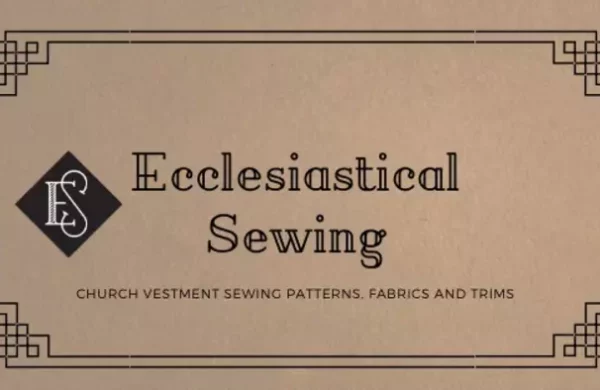
There are so many options to have beautiful vestments and paraments to be part of the worship life at your church. To know more here are our tips for Sewing Church Vestments and Linens: 10 Tips for Success!
Like this:
Like Loading...
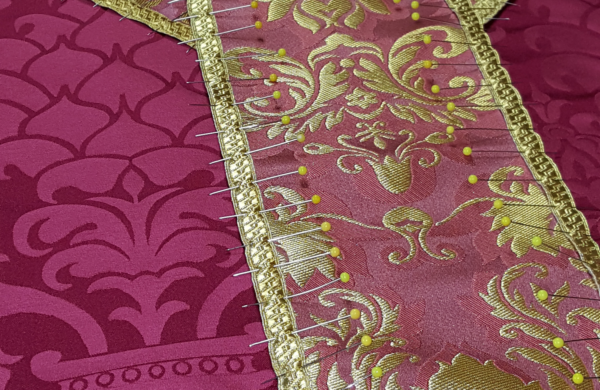
Creating perfect chasuble orphrey bands is easier with these 5 tips. Choose precise marking tools, finish edges to prevent unraveling, mark lines accurately, and pin perpendicular. Use the edge foot for even stitching, spot-check for consistency, and adjust as needed. These simple steps ensure polished and professionally sewn chasuble orphrey bands.
Like this:
Like Loading...
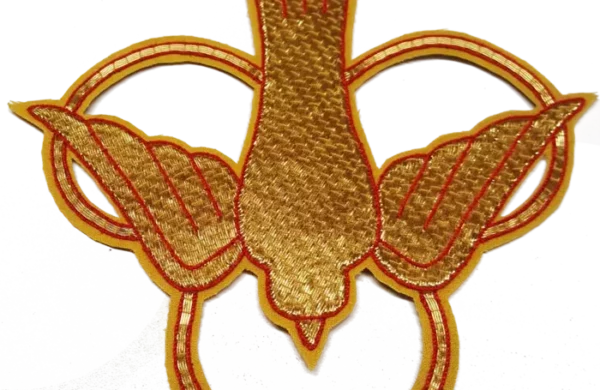
To create a vibrant Pentecost stole, start with a red stole, such as the Ely Crown Stole, featuring plain fabric near the chest area. Choose a gold Dove Applique, like the goldwork Dove with imitation Japanese Goldwork threads, which may include colored thread accents. For couching, use Goldwork threads like Imitation Japanese Gold Thread, Gilt gold twist, or Au Ver a Soie Gold Thread.
Like this:
Like Loading...
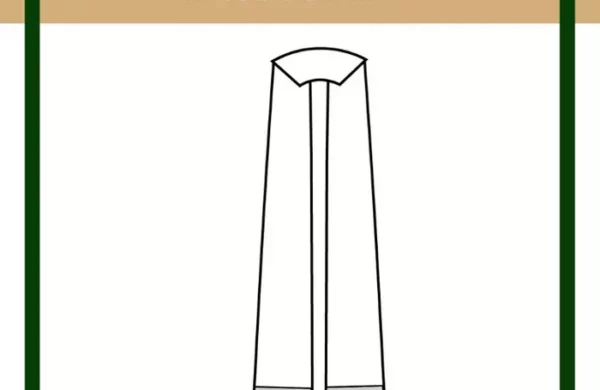
Ecclesiastical Sewing has developed a range of clergy stole patterns to cater to various preferences and historical inspirations. The top five traditional stole patterns include: 4.5 Inch Stole Pattern. A versatile workhorse pattern with a width that accommodates embroidery designs. V-Neck Stole Pattern: Slightly wider at almost 5 inches and featuring a V-shaped point at the back neckline. 3.5 Inch Stole Pattern: Reflecting the historical description by George Tack. Deacon Stole Pattern: It features mitered seams at the shoulder and hip. Lastly, Tapered Stole Pattern: Reflecting changes in history, this stole style is characterized by a narrow fitted neckline that gradually widens at the hemline.
Like this:
Like Loading...
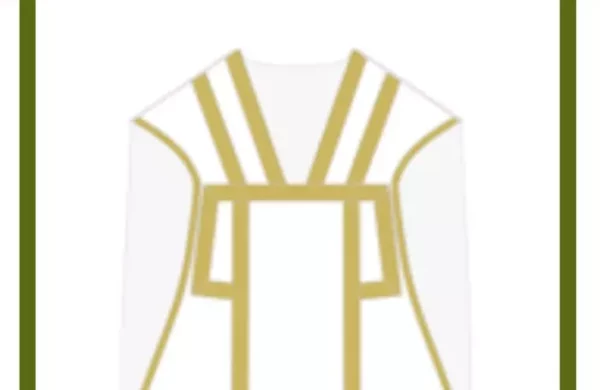
Ecclesiastical Sewing provides traditional church vestment patterns for creating garments for clergies. The choice of vestments depends on the worship service style. For more traditional services, Gothic Style Chasuble with a fuller design is recommended. Monastic Style Chasuble with heavy folds is another option offered by Ecclesiastical Sewing. The Roman chasuble pattern is available in one-size-fits-all, while graded sizes from small to large are available for Gothic and Monastic styles.
Like this:
Like Loading...
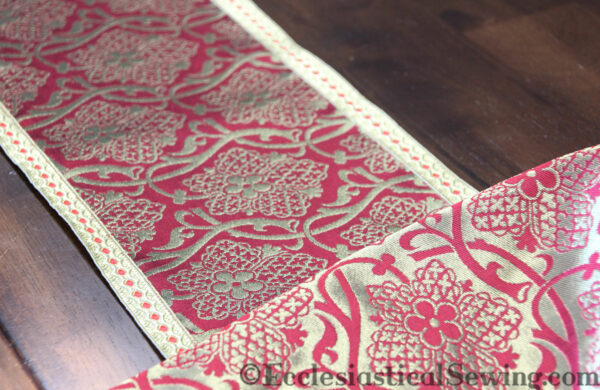
Ecclesiastical Sewing introduces new Chasuble patterns with fancy trims called orphrey bands. The blog explains orphrey bands’ history and talks about the special St. Hubert Brocatelle fabric. It shows how to choose trims and cut the fabric to make these beautiful church vestments, making the process easy to understand for everyone.
Like this:
Like Loading...
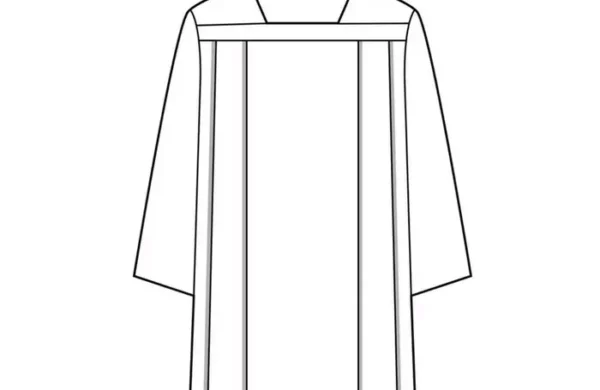
Ecclesiastical Sewing has introduced a fabric called Carlisle, named after a cathedral. It’s affordable, easy to care for, and versatile for making church vestments. It costs less than $25 per yard, is 60 inches wide, and made of 100% polyester. You can use it for various vestment patterns like the Roman Square Yoke Surplice. The Hunter Green Carlisle was used to make a beautiful chasuble with a tapestry orphrey band. It’s great for Albs and surplices, easy to wash, and practical for regular use.
Like this:
Like Loading...
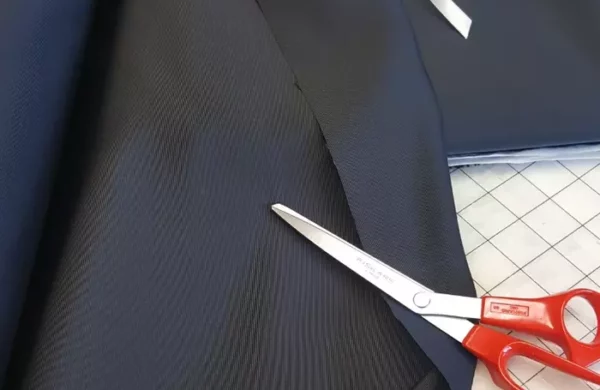
The tippet pattern is one of the many church vestment sewing patterns available through our Ecclesiastical Sewing online storefront. The tippet pattern is sized to have a nice length and width. Tippets are worn with a surplice and cassock as part of the choir dress. They are used for the offices of morning and evening prayer or at other times when Holy Communion is not served.
Like this:
Like Loading...

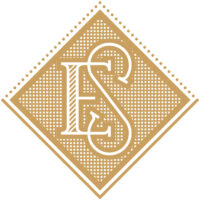














You must be logged in to post a comment.